In a significant step toward cleaner energy and reduced import dependency, India has achieved a nationwide average of 18.93% ethanol blending in petrol as of June 30, 2025, under its ambitious Ethanol Blended Petrol (EBP) Programme.
According to data by the Ministry of Petroleum & Natural Gas (MoPNG), the country has made considerable progress, with several states and union territories leading the way in adopting ethanol-blended fuel.
The detailed state and union territory-wise ethanol blending percentages are as follows:
| STATE / UNION TERRITORY | % Blending (Sales) |
|---|---|
| Andaman & Nicobar | 6.26% |
| Andhra Pradesh | 19.00% |
| Arunachal Pradesh | 18.87% |
| Assam | 18.96% |
| Bihar | 19.02% |
| Chandigarh | 19.04% |
| Chhattisgarh | 16.96% |
| Dadra And Nagar Haveli And Daman & Diu | 19.01% |
| Delhi | 18.96% |
| Goa | 16.15% |
| Gujarat | 18.95% |
| Haryana | 19.30% |
| Himachal Pradesh | 19.26% |
| Jammu & Kashmir | 18.84% |
| Jharkhand | 18.79% |
| Karnataka | 19.13% |
| Kerala | 19.25% |
| Ladakh | 16.17% |
| Lakshadweep | 16.65% |
| Madhya Pradesh | 19.09% |
| Maharashtra | 18.84% |
| Manipur | 18.17% |
| Meghalaya | 18.96% |
| Mizoram | 16.66% |
| Nagaland | 19.03% |
| Odisha | 19.08% |
| Pondicherry | 19.18% |
| Punjab | 19.23% |
| Rajasthan | 18.98% |
| Sikkim | 19.22% |
| Tamil Nadu | 19.11% |
| Telangana | 19.09% |
| Tripura | 18.82% |
| Uttar Pradesh | 18.81% |
| Uttarakhand | 19.00% |
| West Bengal | 19.28% |
| 18.93% |
(Source: MoPNG)
In June 2025 alone, Oil Marketing Companies (OMCs) received 87.5 crore liters of ethanol under the EBP Programme. This brought the cumulative ethanol offtake by OMCs to 637.4 crore liters over the November–June period.
Official data indicates that a total of 88.9 crore liters of ethanol was blended into petrol in June 2025, pushing the cumulative ethanol blending volume to 661.1 crore liters from November 2024 to June 2025.
Since 2014, the government has implemented several measures to ensure equitable access to ethanol production opportunities across various regions of the country. Ethanol production plants are established by entrepreneurs, companies, cooperative societies, and others, based on the techno-economic viability of the project. This includes evaluating the availability of feedstock at a viable cost.
To meet the ethanol requirements for blending with petrol, Oil Marketing Companies (OMCs) have entered into Long-Term Offtake Agreements (LTOAs) with Dedicated Ethanol Plants (DEPs). To encourage entrepreneurs to expand and add new ethanol distillation capacities nationwide, the government approved ‘in-principle’ Interest Subvention Schemes during 2018-2022. Additionally, on March 6, 2025, the government introduced a dedicated subvention scheme for Cooperative Sugar Mills to convert existing sugarcane-based distilleries into multi-feedstock plants, capable of producing ethanol from both molasses and grains.
The National Policy on Biofuels, as amended in 2022, which extends across the country, promotes use of, inter-alia, damaged food grains like broken rice, food grains unfit for human consumption, food grains during surplus phase as declared by the National Biofuel Coordination Committee (NBCC), and agriculture residues (Rice straw, cotton stalk, corn cobs, saw dust, bagasse etc.). This Policy also promotes and encourages use of feedstock such as corn, cassava, rotten potatoes, maize, sugarcane juice & molasses. The extent of utilization of individual feedstock for ethanol production varies annually, influenced by factors such as availability, costs, economic feasibility, market demand, and policy incentives. Any diversion of sugarcane juice, its by-products, maize, and other food/feed crops for ethanol production is carefully calibrated in consultation with relevant stakeholders. Further, to incentivize the use of non-food biomass for second generation ethanol production, Government has launched Pradhan Mantri JI-VAN (Jaiv Indhan-Vatavaran Anukool fasal awashesh Nivaran) Yojana to provide financial support to advance bio-fuel projects using lignocellulosic biomass and other renewable feedstocks.



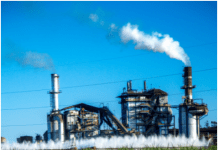

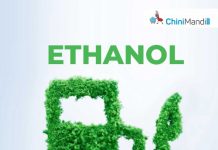





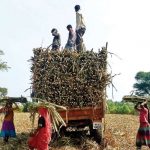
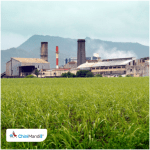



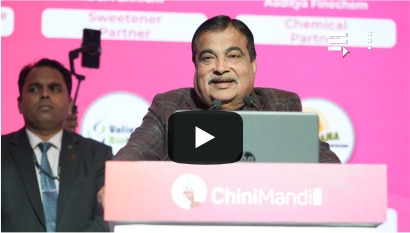
[…] Source : Chinimandi […]